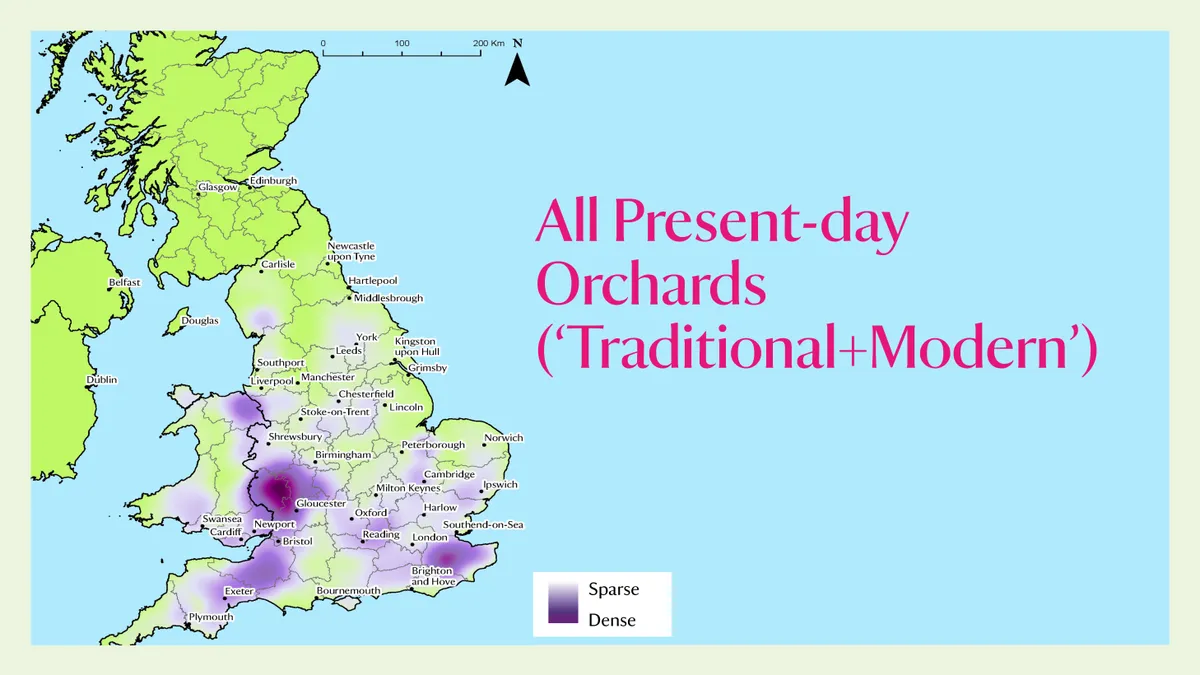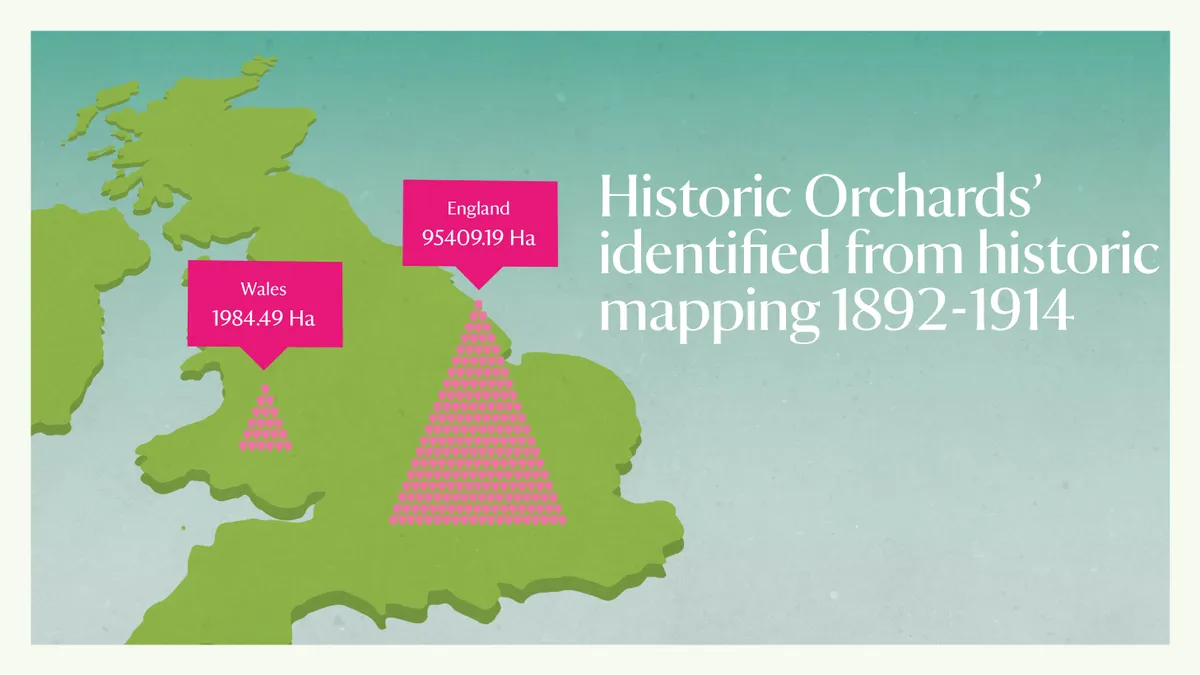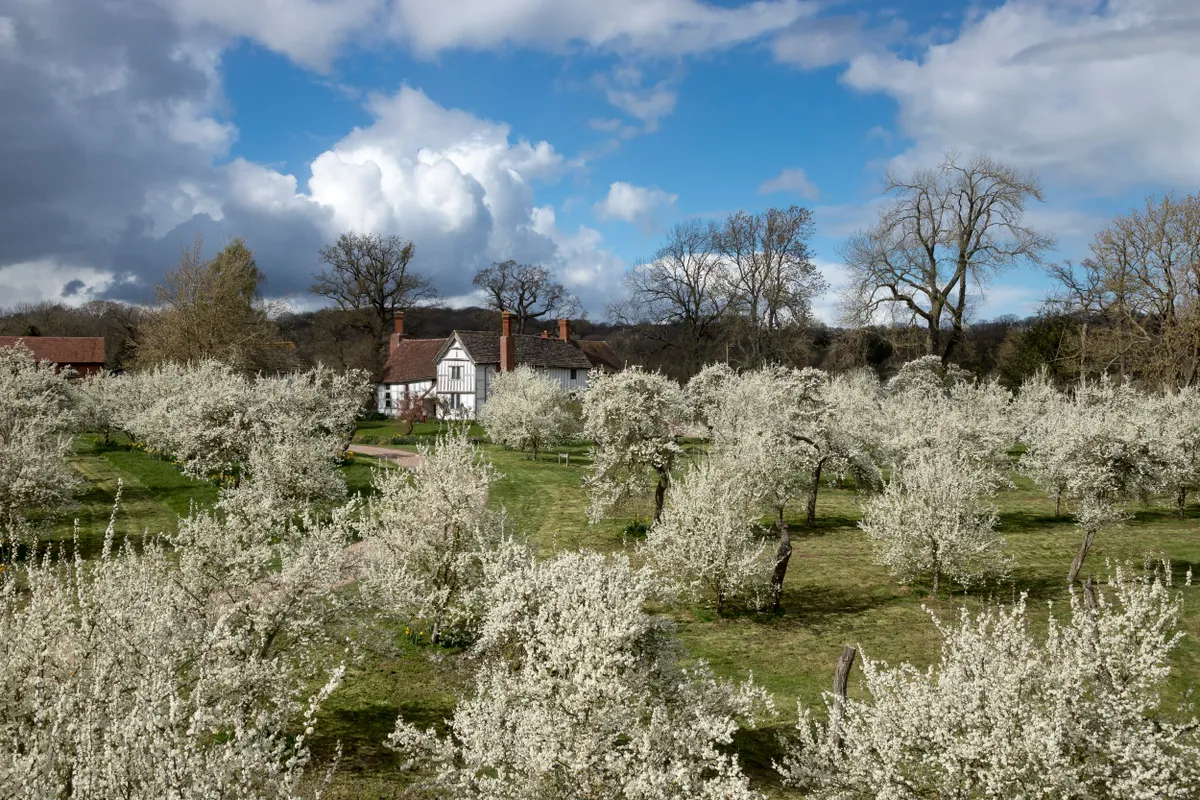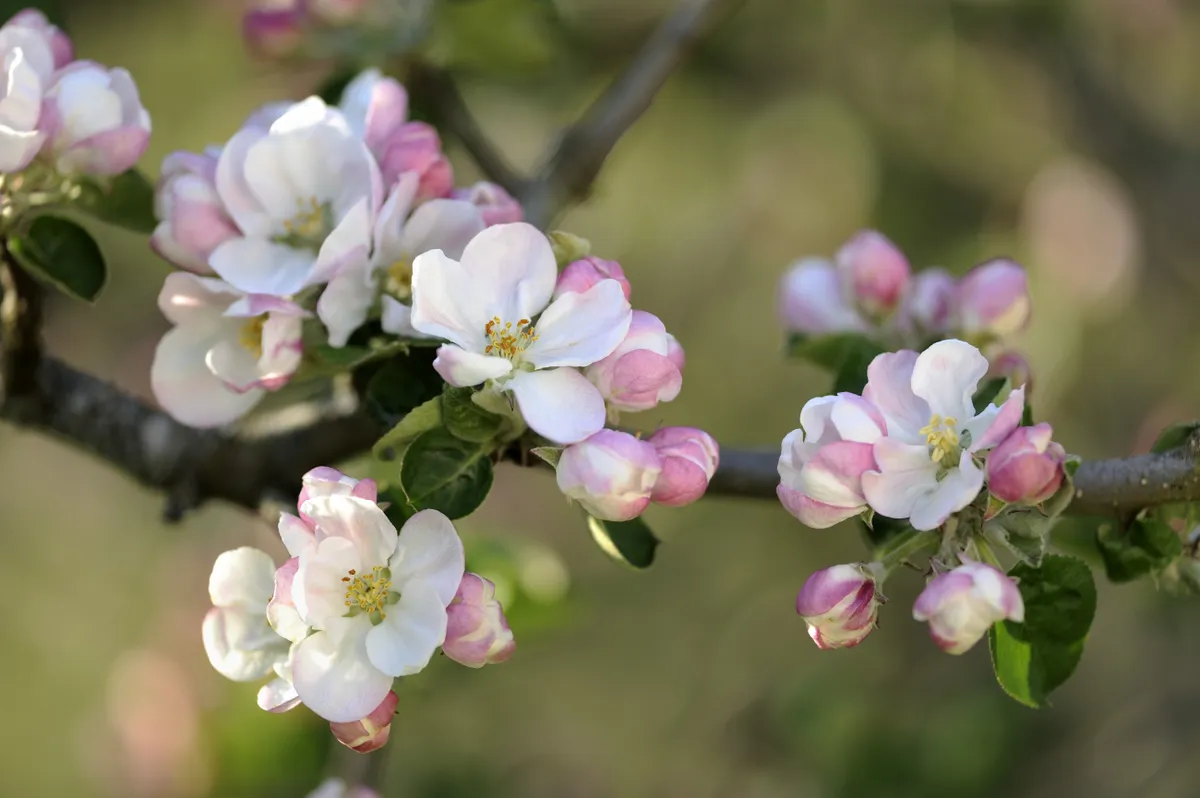The National Trust has today revealed new research which shows a huge decline in orchards and thereby blossom from England and Wales.
Using artificial intelligence analysis, the Trust has established that areas of orchards in England and Wales has halved since the early 1900s. The study is the first comprehensive review of both traditional and modern orchards in England and Wales using data from the National Library of Scotland's historic map collection, data from People's Trust for Endangered Species and Natural England. The sources were analysed using mapping technologies from ArchAI Ltd.
The results show a 56 per cent loss in orchards with just 43,017Ha left growing today, with an 81 per cent decline in traditional orchards in England and Wales.
Tom Dommett, head of historic environment at the National Trust said we are facing a 'nature and biodiversity crisis', but that the research would be invaluable in the fight to reverse the trend.

He said: : "Using cutting edge technology we now have a much better understanding of how we’ve managed landscapes in the past, which is invaluable when thinking about how to tackle the nature and biodiversity crisis that we are facing, and restoring nature."
John Deakin, head of trees and woodland at the National Trust said: "Traditional orchards and the blossom they bring creates valuable early nectar sources for insects which are often foraging for scarce resources in the early spring.

"These native, historic varieties, together with other trees like blackthorn and hawthorn which also have amazing spring blossom, mature at a faster rate than other larger native species such as oak. They therefore provide an important bridge for insects that rely on their particular eco systems which is one of the reasons why planting more blossom trees is such a vital part of our ambitions.”
The largest loss of orchard area in England was in the north with 80 per cent decline in the north-west and 78 per cent in the north-east. The south west, which was home to the largest area of orchards at the beginning of the 20th century has experienced the loss of nearly 24,000Ha (around 74 per cent). That's an area over twice the size of Bristol.
Dommett said: “For hundreds of years orchards were a defining feature in many places, part of the fabric of everyday life. Their loss affects local culture, how we all experience landscapes, and it means fewer opportunities for people to enjoy the beauty and spectacle of blossom today.

“The loss of traditional orchards is also nature’s loss; these orchards can be great places for wildlife like flies and bees, with the gnarled trunks and branches creating the perfect home for rare species such as the noble chafer beetle and attract patrolling bats.
“Often the grass below these trees is rich in flowers, supporting an abundance of insects The web of wildlife that orchards can support, and the benefits to people are vitally important so we want encourage more people to plant more blossom trees to help nature and to recognise the value they have to our landscapes and culture.”
The research has been released as part of the National Trust's #BlossomWatch gets underway. #BlossomWatch is an annual campaign to encourage people to enjoy and celebrate spring blossom.

In a bid to bring blossom back to landscapes in England, Wales and Northern Ireland, the National Trust has now vowed to plant four million blossoming trees as part of its commitment to plant and establish 20 million trees across England, Wales and Northern Ireland by 2030.
It is also planting new traditional orchards at sites to include Stourhead in Wiltshire, Arlington Court in Devon, Kingston Lacy in Dorset, Brockhampton in Herefordshire, Attingham Park in Shropshire, Westhumble in Surrey and is planting new fruit trees at Cotehele in Cornwall which is already home to traditional orchards.





